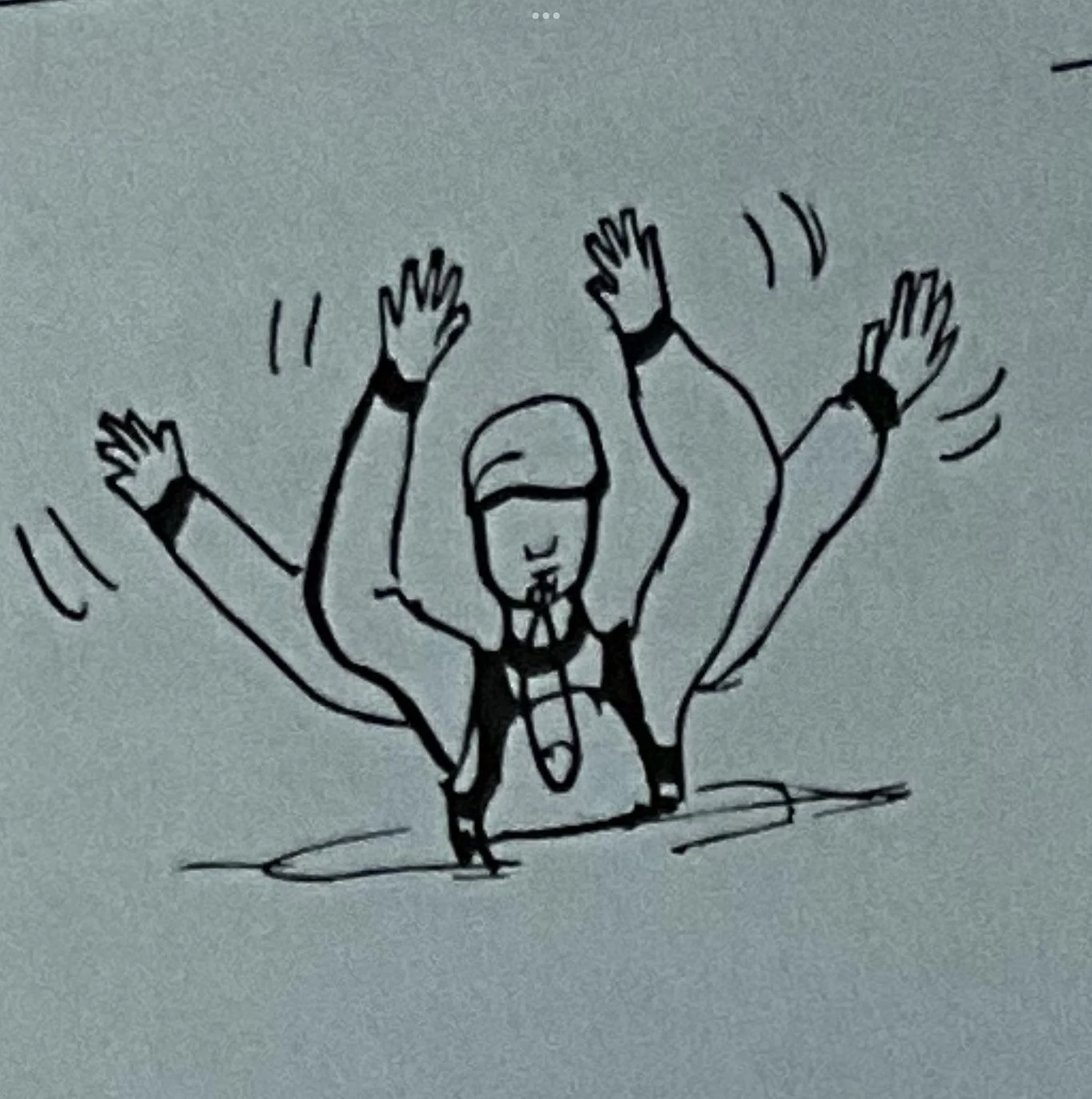River Hand and Whistle Signals
NOLS RIVER RESCUE GUIDE, Nate Otis, Illustrations by Eliza Carver and Caroline Henley
When you're navigating Montana's rivers on a whitewater paddleboard, clear communication is crucial for ensuring everyone's safety. Whitewater environments are noisy and chaotic, and using reliable signals is key to coordinating with your paddling group, especially in tricky rapids. Below, I’ll go over essential hand signals and whistle commands that every whitewater SUP enthusiast should know. Below, I’ll break down the most common river hand signals, as well as the essential whistle commands, based on information from NOLS River Rescue Guide and further expanded with insights from RaftingSpot.com.
Hand Signals for Whitewater Paddleboarding
Stop
How to Signal: Extend your arms out horizontally to form a "T" shape or hold your paddle horizontally above your head.
What It Means: There’s a potential hazard ahead. Everyone should stop and wait for further instructions before proceeding. This could mean there’s a rapid that needs to be scouted or a situation requiring caution. Always wait for the "All Clear" before moving forward.
All Clear/Go Ahead
How to Signal: Hold one arm or your paddle straight up in the air.
What It Means: It's safe to continue. This signal is used after the lead paddler has scouted a rapid or obstacle and determined that the group can move forward. If you're in a group, be sure to pass this signal down the line so everyone knows they can proceed safely.
Go This Way
How to Signal: After signaling “All Clear,” lower your arm or paddle by 45 degrees toward the direction you want others to follow.
What It Means: This tells your fellow paddleboarders which line to take through the rapid or around an obstacle. Be clear with your gestures—don’t point at hazards, but show the safe route instead. This helps avoid confusion and ensures everyone takes the same line.
Eddy Out Here
How to Signal: Rotate your hand or paddle above your head in a circular motion, then point to the eddy where you want the group to stop.
What It Means: You're signaling the group to pull into an eddy, a calm area along the riverbank. Unlike the "Stop" signal, which might imply immediate urgency, eddying out is a more relaxed command, giving the group a place to pause, regroup, or prepare for the next section of the river.
Emergency/Help Needed
How to Signal: Wave your paddle, helmet, or life vest above your head, combined with three long blasts on a whistle.
What It Means: This is the universal signal for an emergency on the water. If you see this signal, assist the person as quickly as possible. In whitewater SUP, quick responses can prevent minor incidents from escalating into more dangerous situations.
Are You OK?
How to Signal: Point at the person with one arm while patting your head with the other.
What It Means: This is how you check on someone after a challenging rapid or if they've fallen off their board. The person can respond by patting their head to signal they’re fine or waving "No" to indicate they need assistance.
Whistle Signals for Whitewater Paddleboarding
While hand signals are effective, sometimes the roar of the river or distance between paddlers makes them hard to see. That’s where whistles come in. Many paddlers carry a whistle attached to their PFD for quick communication.
One Blast: "Look at me! I have something important to communicate."
Use this to get someone’s attention before giving a hand signal.
Three Blasts: "Emergency! I need help!"
This is the go-to signal for emergencies. It should be recognized as a serious call for assistance, and all paddlers should respond accordingly.
Whistles can be heard over the loudest rapids, making them an essential tool for communication in whitewater paddleboarding. Be sure to have one on hand during every outing.
The Importance of Communication in Whitewater SUP
Whether you're exploring Beartrap Canyon or paddleboarding on another of Montana’s stunning rivers, effective communication can make all the difference in maintaining safety. Paddlers often find themselves separated by rapids, rocks, and obstacles, making it hard to shout instructions. Hand signals and whistles create a universal language that can be used regardless of skill level or group familiarity. Knowing these signals can prevent accidents, help you navigate rapids more effectively, and ensure the whole team stays together and safe.
As you gear up for your next adventure with SUP Montana, remember that safety should always come first. Understanding these hand signals and whistle commands can make your time on the river smoother and safer. When you're tackling Class III rapids or cruising a calmer section of river, these basic communication tools will ensure that you and your fellow paddleboarders stay in sync and avoid unnecessary risks.
If you're new to whitewater paddleboarding or looking to brush up on your skills, consider practicing these signals with your group before hitting the river. Safety gear, strong communication, and awareness of your surroundings are all part of a solid safety plan that will help you thrive in the thrilling environment of Montana's whitewater rivers.
